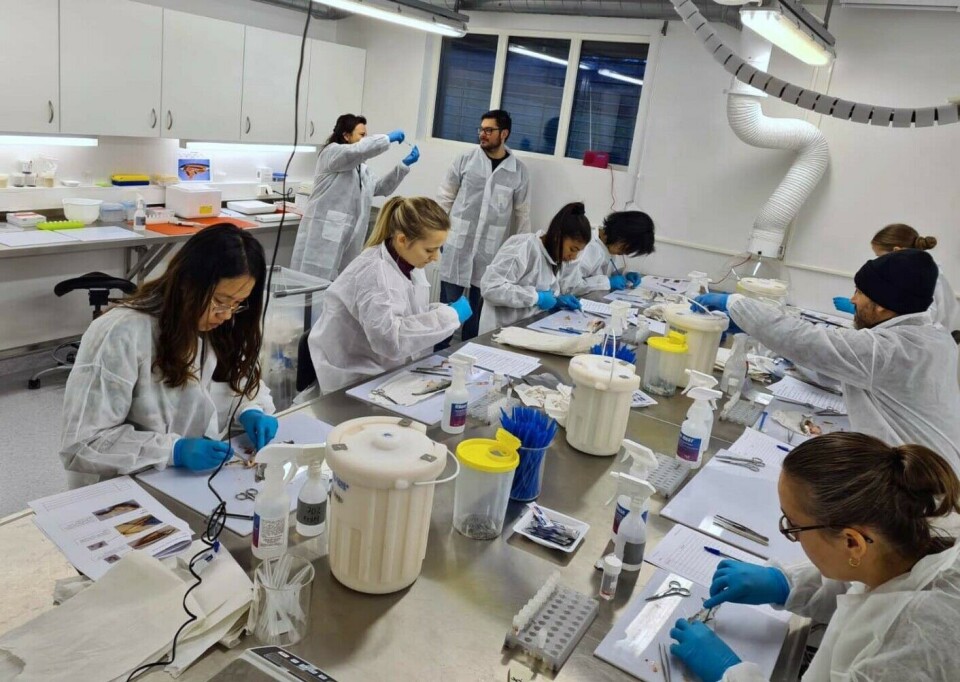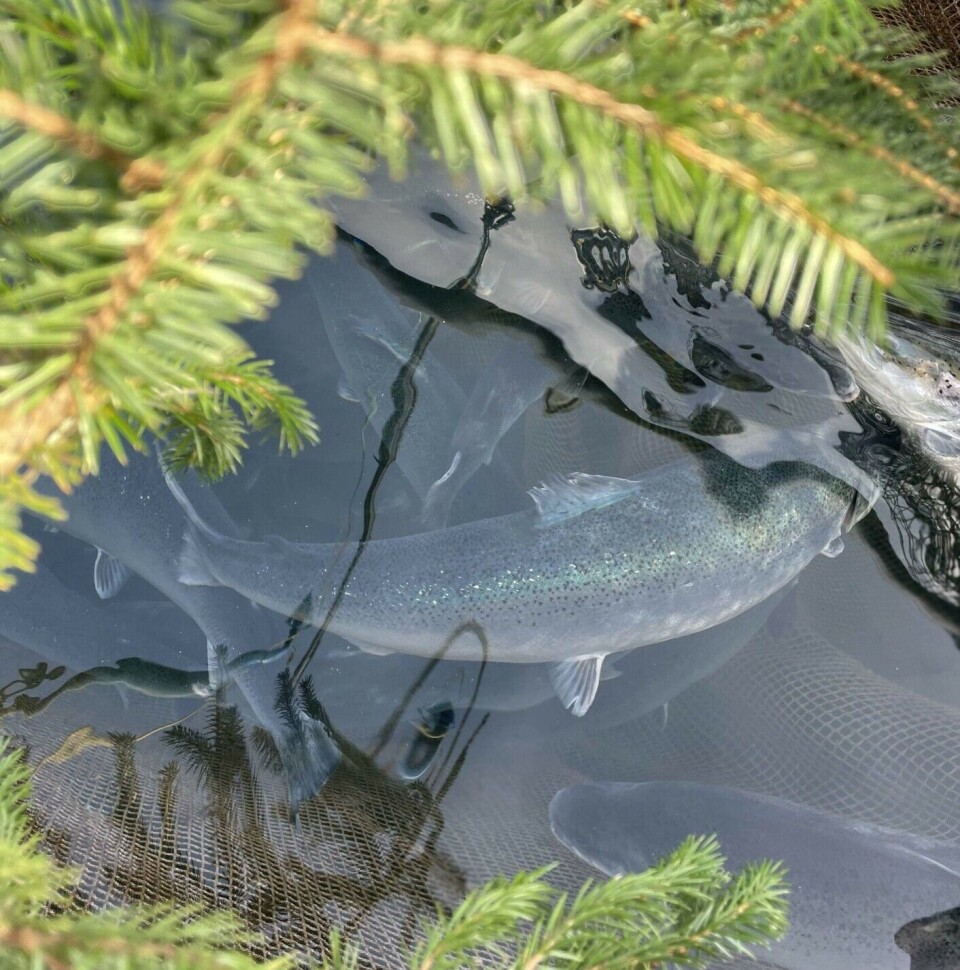THIS CONTENT IS BROUGHT TO YOU BY the Norwegian University of Life Sciences (NMBU) - read more

This yeast makes environmentally friendly feed for salmon
Salmon need to be fed without harming the environment. The solution is a small yeast fungus. It can be cultivated from timber, as well as a range of raw materials that would otherwise be discarded.
Pekilo (Paecilomyces variotii) is a filamentous microbe that can help combat deforestation in South America and reduce greenhouse gas emissions from transportation.
Salmon seem to enjoy eating it, too.
“The fish immediately liked the feed. The salmon spent no time getting used to the taste. It’s not often we see things go quite so well,” says Jamie M. Hooft, a researcher at the Norwegian University of Life Sciences (NMBU).

Something must be done about the feed
Since 2015, NMBU has led a large, international project to find more sustainable feed for farmed salmon.
“If we are to achieve our climate targets, we need to do something about feed, and that means looking at sustainable ingredients,” says Professor Margareth Øverland, head of the centre, called Foods of Norway.
Now, researchers, businesses, and organisations have progressed to the point where they have not only developed new feed – they have also begun testing the feed on salmon.
Good growth performance and health
“We've conducted growth trials in which we have given the salmon feed containing varying amounts of Pekilo,” says Hooft.
Up to 20 per cent of the protein content in the feed was replaced with Pekilo. The researchers measured and weighed whole fish before and after feeding. They also checked how digestible the feed was to see what the fish absorbed and converted into muscle.
They also studied gut health to assess whether Pekilo has an effect on health and the immune system.

The results have been positive throughout the trials.
The salmon absorb more protein when consuming feed containing Pekilo. This is good for the environment because more of the feed is utilised. It means that the salmon can grow equally well with a little less feed, which reduces the carbon footprint.
“It also results in improved growth in the long term, in addition to reducing emissions of nitrogen and phosphorus,” says Øverland.
The gut health studies indicate that the Pekilo feed has a positive health effect.

Deforestation and transportation
Why spend so many resources on developing a new type of feed for farmed salmon?
The answer is in the numbers. The world needs more food, and in Norway, salmon and trout production could increase fivefold between 2020 to 2050. That would require 6.2 million tonnes of feed – more than the weight of the Great Pyramid of Giza in Egypt.
92 per cent of salmon feed is currently being imported from other parts of the world, especially soy from Brazil. New raw materials with a low carbon footprint are needed, both to increase supply security and to meet Norway's climate goals.
At the same time, strict climate requirements mus be imposed on the imported raw materials. Pekilo feed has been shown to produce significantly lower greenhouse gas emissions than soy.

Insects are another source of protein that many are discussing and researching, especially because they are said to be environmentally friendly and easy to produce. However, it turns out that feed with insects also produces more greenhouse gas emissions than feed with Pekilo.

High cost
For the aquaculture industry – and the end consumer – cost is important. Buying feed accounts for almost half of the cost of salmon production.
Pekilo can be produced throughout the year and does not require large areas of land or good weather. The filamentous microbes are produced in a process that is very similar to brewing beer, with the yeast growing in tanks.
Norwegian spruce can be used as a raw material, as can a number of other by-products from both sea and land. By-products are what remain of the raw material after the edible part of the plant, fish, or animal has been used in food production. These can include stems, peels, bones, membranes, and entrails.
“Now everybody’s just waiting for something to happen. We possess a wealth of knowledge, but that knowledge needs to be taken further and the technology needs to be scaled up," says Øverland.
Regulatory changes are also needed: Much of what could be turned into good fish feed is currently not allowed to be used under existing regulations.

Starting with timber
Initially, timber will be used to move forward on a larger scale.
“The sustainable biorefinery Borregaard produces ethanol from timber and is then left with a residual fraction. That’s what we use as an input to produce the new microbe," says Øverland.
Although they have extensive knowledge, she notes that further technological development is necessary, and there is a lack of capital to fully invest in the project.

Reference:
Hooft et al. Paecilomyces variotii (Pekilo) in novel feeds for Atlantic salmon: Effects on pellet quality, growth performance, gut health, and nutrient digestibility and utilization, Aquaculture, 2024. DOI: 10.1016/j.aquaculture.2024.740905
———
Read the Norwegian version of this article on forskning.no
More content from NMBU:
-
We're eating more cashew nuts – and the consequences are serious
-
Do young people with immigrant parents have better health?
-
Who’s picking your strawberries this summer?
-
Can coffee grounds and eggshells be turned into fuel?
-
Rising housing costs fuel inequality in Norway
-
Researchers warn: Climate change in African mountains has a greater impact than previously thought






































